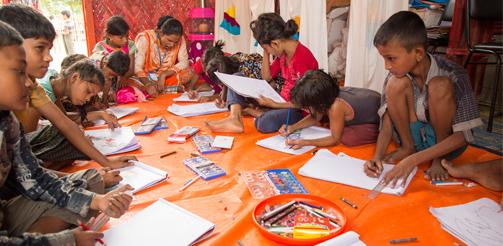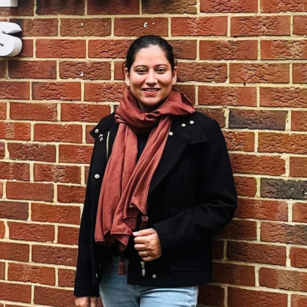Last week, I was fortunate to take part in the Commonwealth Heads of Government Meeting (CHOGM). The meeting brought together nation heads of 53 Commonwealth member nations to discuss the common future and course of action towards a sustainable, secure, and fair way forward the commonwealth countries.

Alongside ministerial delegations at the meeting, the Commonwealth secretariat in partnership with One Young World (a UK-based not for profit), invited a special delegation of 30 young leaders with tangible impact in their communities from across the commonwealth.
I was invited to participate in the CHOGM Youth Forum in developing SMART policy action plans and recommendations on the theme of promoting ‘sustainable, prosperous, fairer and more secure future’ for the Commonwealth. I also represented Bangladesh at the General Assembly of the Youth Council alongside the ministerial delegates.
Utilizing youth power across the Commonwealth for more secure futures
The theme of the Youth Forum at CHOGM, ‘Powering Our Common Future’ was chosen to reflect the potential of young people across the Commonwealth to devise solutions to complex global challenges and bring meaningful recommendations to Heads of Government.
One of the most important themes discussed at CHOGM this year was how to utilize youth power to create a more secure environment across the Commonwealth. The world today faces the highest number of displaced populations ever in the history. Many of these displaced people are living as refugees across the globe. One such pressing refugee crisis happening right now is the Rohingya crisis. The Myanmar military forces via violent operations in the Rakhine state have carried out what the UN termed as a ‘text book case of ethnic cleansing’. This pushed thousands of people out of their homes, their countries and towards an uncertain life with deplorable conditions in refugee camps in Bangladesh. According to official statistics 700,000 Rohingya refugees arrived in Bangladesh and took shelter in the Refugee camps in the Cox’s Bazar area.
Multiple demographic reports by INGOS and international media have indicated that the average age of the population in the Rohingya Refugee camps are around or below the age of 30. Left to live in these camps under uncertainty, this huge chunk of young population has no access to formal education and income-generating activity. Given the visible difference between the work done by humanitarian organizations and development organizations; most of the current support interventions in these camps are around solving short-term urgent issues like food, water and shelter. As much as addressing urgent needs are essential, at the same time preventing long term crisis is also crucial.
If the children and youths living in this refugee camps are left without access to education and any proper way of constructively channeling their energy, then deprivation may and will lead them into getting associated with illegal activities and terrorist organizations. In order to prevent this from happening, it is crucial that the gap between the humanitarian approach and developmental approach is merged to design more holistic interventions for youth development in these camps. This can be addressed via international collaborations and effective inter-sector partnerships. This is not one sector or one country’s problem. The Rohingya refugee crisis is not a national issue but a transboundary, cross-cutting issue. Refugees from Myanmar are also seeking shelter in other commonwealth nations like Malaysia at present and spill over from the camps in Bangladesh will affect India and Pakistan and other countries in the region.
Four vital actions needed to support Rohinya youth
In CHOGM, the “Commonwealth member states have called for sustainable return of all displaced Rohingyas sheltered in Bangladesh to their rightful homes in Myanmar under UNHCR oversight”. However, no time frame was mentioned in the previously signed agreement between Bangladesh and Myanmar (regarding the return of the refugees). Therefore, the lives of the thousands of youngsters in these camps still remain uncertain and the risk of them getting involved in undesired activities in future also remains constant.
To help ensure sustainable and safe futures for youth in the Rohingya refugee camps, the following needs to be addressed by international / supranational bodies like the Commonwealth and United Nations:
- Improve coordination between humanitarian and development organisations working in the refugee camps, via forming an international coordination body with representation of both kinds of organisations currently addressing the issue.
- Establish a special education system in camps for refugee children and youths. This system will be a temporary arrangement (with the hope the refugees will be able to return home). It may not follow the Bangladesh’s national curriculum and will need to be designed in a different language.
- Launch skill development projects (computer, manufacturing, handicraft etc.) for youths in the refugee camps so that they can aim for a better life post-crisis. These trainings could be arranged in collaboration with Bangladeshi NGOs who have experience of delivering such life-skill trainings to youth.
- Support youths to advocate for their right of safely returning to their homes in Myanmar. This can be done by arranging leadership trainings for the refugee youths and introducing them to the concept of ‘citizen journalism’. This will also require multi-sectoral partners to come together and create platforms for the voices from within the refugee camps to be heard globally.
The Commonwealth, as a voice of 53 nations can play a vital role in coordinating this development by engaging partners from member countries and can also take a lead on creating international pressure on Myanmar to ensure the safe return of Rohingya refugees to their rightful homes.
Tanjila Mazumder Drishti is a Bangladeshi women’s rights and anti-poverty campaigner, and an IDS Master’s student.
Image: Rohingha youth drawing at Batukhali refugee camp in Bangladesh, supported by UK Aid. Credit: Anna Dubuis / DFID (Flickr creative commons)
